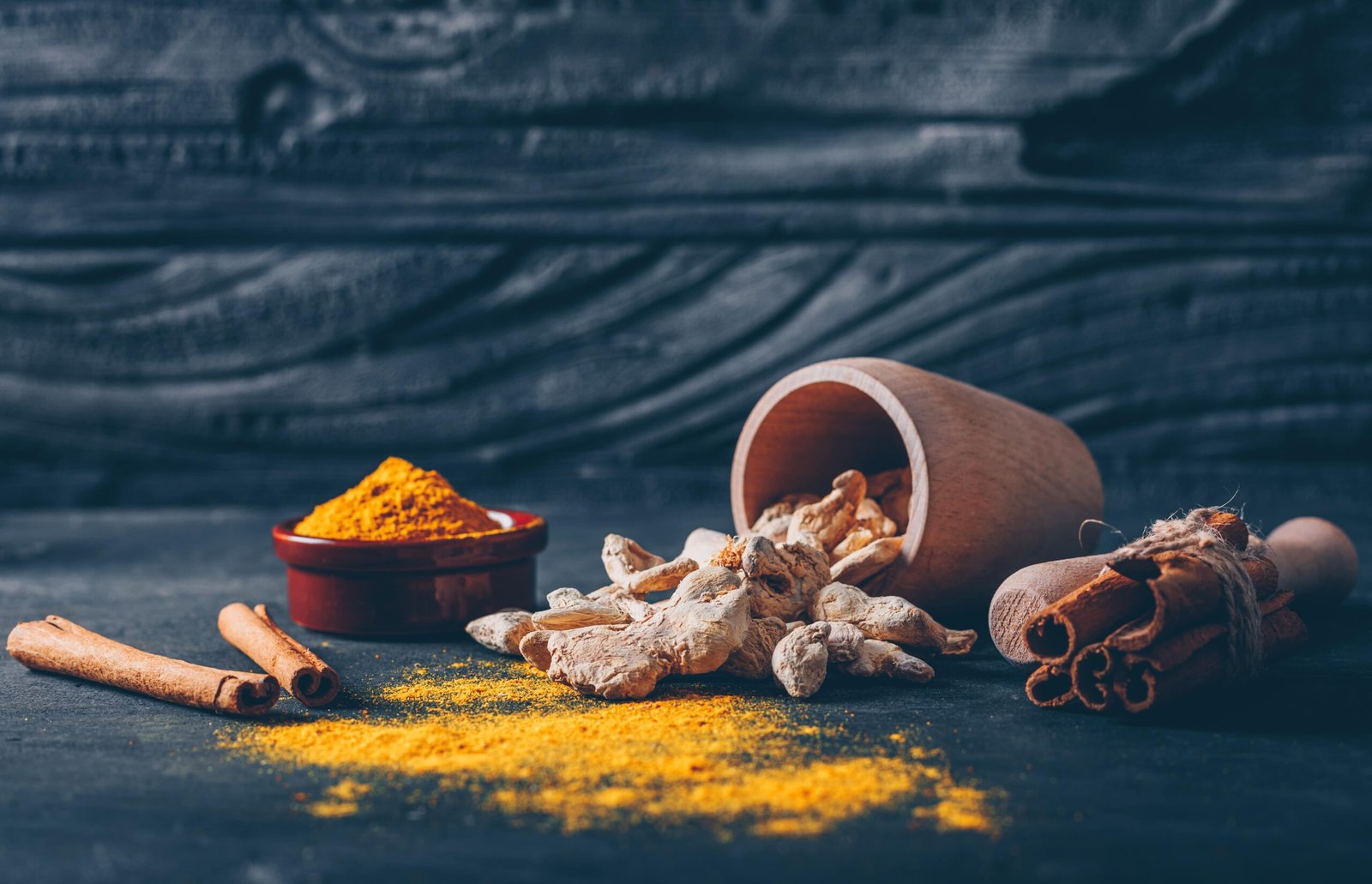I still remember the day I realized something had to change. It was a Monday morning, and I was late for work again—this time due to an urgent sprint to the restroom. Coffee, toast, and energy bars had become my daily ritual, yet my gut felt like a rebellious teenager: unpredictable, moody, and prone to drama. If you’ve been there, you know how embarrassing and frustrating it can feel.
My turning point came when a friend introduced me to gut health Ayurveda. Skeptical at first, I dove into classical texts and modern interpretations, experimenting with spices in my kitchen and meditating on mealtimes. Slowly, I discovered the power of dosha-specific eating, and my Agni (digestive fire) transformed from flickering wick to roaring flame.
In this post, I’ll share:
Table of Contents
Understanding Ayurvedic Gut Health: Agni, Ama, and Srotas

At the heart of Ayurvedic gut health lies a simple yet profound concept: the three pillars of digestion—Agni, Ama, and Srotas.
- Agni (Digestive Fire): Think of Agni as the spark that transforms food into energy, nutrients, and life force. When Agni is balanced, you experience steady appetite, efficient metabolism, and clear mind.
- Ama (Toxins): Ama refers to the sticky, heavy byproducts of incomplete digestion. Accumulated ama can clog your srotas (channels), leading to bloating, fatigue, and inflammation.
- Srotas (Channels): These are the microscopic pathways through which nutrients and waste products move. Healthy srotas mean smooth flow; blocked srotas manifest as constipation, skin issues, or mental fog.
Why This Matters: Modern diets and constant hustle often weaken Agni, creating ama that burdens our systems. An Ayurvedic gut health diet addresses root causes, restoring harmony rather than masking symptoms.
The Three Doshas: Your Unique Digestive Blueprint

Ayurveda teaches that each of us embodies a unique combination of three doshas—Vata, Pitta, and Kapha. Identifying your dominant dosha is the first step to a personalized gut health plan.
| Dosha | Elements | Digestive Traits | Imbalance Symptoms |
|---|---|---|---|
| Vata | Air + Ether | Irregular appetite, gas, bloating | Constipation, dry stools, anxiety |
| Pitta | Fire + Water | Strong hunger, quick digestion | Acid reflux, diarrhea, irritability |
| Kapha | Earth + Water | Slow digestion, heaviness | Congestion, weight gain, sluggishness |
- Vata types benefit from warm, grounding foods and regular routines to stabilize their mobile energy.
- Pitta types need cooling, mild foods to temper their intense fire and prevent inflammation.
- Kapha types thrive on light, stimulating foods that counteract their heavy, slow-moving nature.
Dosha-Specific Diet Guidelines: Top Foods, Tips
Achieving optimal gut health Ayurveda means tailoring your meals to pacify your dominant dosha. Below, you’ll find an expanded dosha food guide with:
- Top 10 gut-healing foods for each dosha
- Additional Ayurvedic gut diet tips
- Bullet-pointed benefits and dosha-balancing foods lists
Vata Gut Health Diet: Grounding the Air Element
Vata’s light, dry, and mobile qualities require nourishment with warm, moist, and grounding foods to stabilize digestion and reduce gas.
Top 10 Vata-Balancing Foods:
- Kitchari (mung dal + rice)
- Warm oatmeal with ghee and dates
- Steamed root vegetables (carrots, beets)
- Cooked apples with cinnamon
- Spiced almond milk (cardamom + saffron)
- Avocado mashed on toast
- Soupy dal (lentil stew)
- Baked sweet potatoes
- Congee (rice porridge)
- Ghee-drizzled quinoa
Ayurvedic Gut Diet Tips for Vata:
- Routine meals: Eat at the same times daily to strengthen Agni.
- Warm beverages: Sip ginger-honey tea to reduce bloating and improve circulation.
- Moist cooking methods: Stew, steam, or braise rather than bake or sauté dry.
Pitta Gut Health Diet: Cooling the Fire Element
Pitta’s intense fire demands cooling, mild, and slightly sweet foods to soothe acid reflux and inflammation.
Top 10 Pitta-Pacifying Foods:
- Cucumber-mint raita
- Coconut yogurt with melon
- Barley and cilantro soup
- Cooked asparagus with lemon
- Steamed zucchini noodles
- Aloe vera juice
- Coconut chia pudding
- Fresh berries (blueberries, raspberries)
- Pomegranate seeds
- Leafy greens (kale, spinach)
Ayurvedic Gut Diet Tips for Pitta:
- Avoid overheating: Limit spicy, fried, and oily foods that inflame Pitta.
- Hydrate strategically: Drink coconut water or rose-infused water for cooling effects.
- Mindful spice use: Favor mint, coriander, fennel; skip chili peppers and black pepper if overly hot.
Kapha Gut Health Diet: Uplifting the Earth Element
Kapha’s grounding energy benefits from light, dry, and warming foods that stimulate digestion and prevent mucus buildup.
Top 10 Kapha-Balancing Foods:
- Ginger-turmeric quinoa salad
- Roasted cauliflower with cumin
- Millet porridge with cloves
- Stir-fried bitter greens (arugula, kale)
- Buckwheat pancakes with maple syrup
- Spicy lentil soup
- Warm ginger water
- Stir-fried tofu with vegetables
- Apple cider vinegar drinks
- Herbal teas (peppermint, mustard seed)
Ayurvedic Gut Diet Tips for Kapha:
- Stimulate Agni: Use pungent and bitter tastes to ignite your digestive fire.
- Light cooking methods: Stir-fry, grill, or roast rather than steam or boil.
- Snack strategically: Opt for warm spices and herbal teas instead of heavy dairy or sweets.
7-Day Dosha Meal Plans
Below are fully outlined, 7-day rotations. Adjust quantities based on your hunger cues.
Vata 7-Day Rotation
| Day | Breakfast | Snack Morning | Lunch | Snack Afternoon | Dinner |
| 1 | Warm oatmeal with ghee & dates | Baked pear w/ cinnamon | Khichari with root vegetables | Ginger honey tea | Stewed veggies & quinoa |
| 2 | Rice porridge w/ maple syrup | Soaked almonds | Moong dal soup | Warm almond milk | Sweet potato mash & ghee-roasted kale |
| 3 | Millet porridge w/ raisins | Coconut chia pudding | Veggie stew w/ basmati rice | Fennel tea | Lentil khichdi |
| 4 | Quinoa upma w/ veggies | Warm spiced milk | Carrot-ginger soup | Dates & walnuts | Stuffed peppers w/ barley |
| 5 | Semolina porridge w/ nuts | Apple-cinnamon cups | Sweet potato-kale curry | Herbal digestive tea | Rice & mung bean curry |
| 6 | Buckwheat pancakes w/ ghee | Warm pear compote | Roasted carrot & beet salad | Almond-coconut milk | Kitchari |
| 7 | Spiced rice pudding w/ cardamom | Cooked raisins | Veggie khichdi w/ turmeric | Warm ginger tea | Root vegetable soup |
Pitta 7-Day Rotation
| Day | Breakfast | Snack Morning | Lunch | Snack Afternoon | Dinner |
| 1 | Coconut chia w/ berries | Cucumber sticks | Quinoa-cucumber salad | Coconut water w/ mint | Steamed broccoli & millet |
| 2 | Oatmeal w/ shredded coconut | Melon wedges | Mung bean soup w/ cilantro | Chamomile tea | Rice & veggie stir-fry |
| 3 | Barley porridge w/ pear | Coconut yogurt | Amaranth salad w/ cucumber | Mint-lime water | Zucchini noodles & veggies |
| 4 | Rice porridge w/ cardamom | Pomegranate seeds | Veg barley soup | Rose tea | Steamed greens & quinoa |
| 5 | Quinoa porridge w/ melon | Aloe vera juice | Sweet potato-cilantro curry | Coconut mint tea | Dal w/ cilantro rice |
| 6 | Smoothie bowl w/ aloe & mint | Fresh coconut | Veg quinoa pilaf | Chamomile-lavender tea | Baked zucchini & rice |
| 7 | Amaranth porridge w/ apple | Cucumber slices | Lentil soup w/ cilantro | Coconut water | Cauliflower & millet stir-fry |
Kapha 7-Day Rotation
| Day | Breakfast | Snack Morning | Lunch | Snack Afternoon | Dinner |
| 1 | Buckwheat porridge w/ ginger | Lemon water | Stir-fry veggies & millet | Black pepper tea | Spicy lentil soup |
| 2 | Quinoa bowl w/ arugula & lemon | Apple slices | Veg curry w/ quinoa | Mustard seed tea | Roasted cauliflower & greens |
| 3 | Millet porridge w/ turmeric | Papaya chunks | Mung salad w/ radish | Peppermint tea | Buckwheat khichdi |
| 4 | Amaranth porridge w/ pumpkin seeds | Ginger water | Arugula-kale salad w/ lemon-dressing | Roasted chickpeas | Spiced daal w/ quinoa |
| 5 | Moong khichdi | Grapefruit slices | Quinoa-stuffed peppers | Mustard latte | Stir-fried tofu & greens |
| 6 | Semolina porridge w/ cloves | Warm melon bites | Spinach-lentil soup | Fennel tea | Roasted squash & kale |
| 7 | Barley porridge w/ raisins | Warm lemon water | Buckwheat noodles & veggies | Cinnamon tea | Mung bean curry |
Ayurvedic Lifestyle Rituals for a Happy Gut

While food is the cornerstone of Ayurvedic gut health, lifestyle practices—daily rituals, breathwork, and mindful movement—serve as powerful allies in keeping digestion smooth and Agni strong. These holistic habits help move stuck energy, calm stress-induced indigestion, and create the rhythmic balance your gut craves.
Morning Rituals to Fire Up Agni
- Tongue Scraping: Removes overnight ama and jumpstarts digestion.
- Warm Lemon Water: Alkalizes the gut, hydrates tissues, and sparks Agni.
- Oil Pulling: Swishing sesame or coconut oil clears oral bacteria that can tax digestion.
- Abhyanga (Self-Massage): Daily massage with warm oil (sesame for Vata, coconut for Pitta, mustard for Kapha) supports lymph flow and calms the nervous system.
Breathwork & Movement for Gut Harmony
- Pranayama (Yogic Breathing): Especially Nadi Shodhana and Kapalabhati to stimulate digestion and balance the nervous system.
- Yoga Asanas: Gentle twists (like Ardha Matsyendrasana), forward bends (like Paschimottanasana), and wind-relieving pose (Pawanmuktasana) boost gut motility and relieve gas.
- Walking After Meals: A 10-minute stroll enhances peristalsis and reduces sluggish digestion.
Mealtime Mindfulness
- Eat Without Screens: Distraction dulls Agni. Focus solely on your food.
- Chew Thoroughly: Aim for 25–30 chews per bite to reduce digestive burden.
- Regular Meal Times: Eat your largest meal at noon when Pitta (digestive fire) is highest.
Ayurvedic Evening Wind-Down
- Golden Milk: A warm turmeric latte with nut milk and cardamom to reduce inflammation and support gut repair.
- Digestive Teas: Cumin-coriander-fennel tea or ginger tea to settle your stomach.
- Consistent Sleep Schedule: Sleeping by 10 PM aligns with the body’s natural detox cycle.
Personal Insight: I used to eat while scrolling Instagram—until I realized I wasn’t tasting or digesting properly. Swapping that habit for silent eating, paired with deep breaths before meals, changed everything. Now, my meals feel like meditative rituals—and my gut thanks me daily.
Rituals aren’t about perfection; they’re about presence. Anchor your gut health in these daily acts, and transformation follows naturally.
Dinacharya (Daily Routine) anchors your day and fortifies your Agni:
- Abhyanga (Self-Massage): Warm sesame oil, clockwise abdominal strokes, 10 minutes.
- Pranayama (Breathwork): Nadi Shodhana (alternate nostril breathing) for 5 minutes.
- Yoga Asanas: Twists like Bharadvajasana and forward folds after meals.
- Mindful Eating: Chew 25 times per bite, pause between bites, no screens during meals.
- Hydration Timing: Sip warm water 20 minutes before/after meals, avoid large volumes with meals.
- Consistent Sleep: 10 PM–6 AM aligns with kapha and pitta cycles for repair and detox.
Personal Tip: I set an hourly timer to remind me to sip warm ginger water—an instant pick-me-up that also clears ama
Ayurvedic Herbs & Supplements to Support Your Gut

Beyond food and lifestyle, certain Ayurvedic herbs and formulations can bolster digestion, enhance Agni, and aid in clearing ama. Always consult a qualified Ayurvedic practitioner before starting any new supplement.
- Triphala: A classic three-fruit blend (amalaki, bibhitaki, haritaki) that gently cleanses the digestive tract and supports regularity.
- Ginger (Zingiber officinale): Fresh ginger tea or ginger capsules stimulate gastric juices and improve nutrient absorption.
- Cumin-Coriander-Fennel Tea: A simple kitchen brew that soothes gas and bloating. Mix 1 tsp of each seed, simmer in water for 5–10 minutes.
- Licorice (Yashtimadhu): Balances Pitta-induced inflammation and soothes the gut lining.
- Shankhapushpi: Supports the gut-brain axis by calming the mind and reducing stress-related digestive issues.
Supplementation Tips:
- Start with low doses and assess tolerance.
- Combine herbs mindfully; avoid aggravating your dominant dosha.
- Use keywords like “best Ayurvedic supplements for digestion” and “natural gut healing herbs” to find reputable sources.
Seasonal Eating: Align Your Gut with Nature’s Rhythms
Ayurveda emphasizes Ritucharya—adjusting your diet according to the seasons to maintain doshic balance and strong Agni.
- Spring (Kapha-Predominant): Favor light, warming spices (turmeric, ginger) and bitter greens to counter Kapha sluggishness.
- Summer (Pitta-Predominant): Embrace cooling fruits and vegetables—coconut water, melons, cucumbers—to pacify Pitta heat.
- Autumn (Vata-Predominant): Introduce grounding, moist foods like stews, congee, and cooked root vegetables to stabilize Vata’s dryness.
- Winter (Vata-Kapha Mix): Warm, nourishing meals—ghee-rich khichdi, whole grains, warming spices—support both Vata warmth and Kapha energy.
Seasonal adjustments keep your gut resilient to external changes and amplify the benefits of your dosha-specific meal plans
Kitchen Essentials & Ayurvedic Shopping Guide
Stock your pantry and fridge with Ayurvedic staples for effortless gut-friendly cooking:
- Whole Grains: Basmati rice, quinoa, millet, barley
- Legumes: Mung dal, red lentils, chickpeas
- Spices & Herbs: Cumin, coriander, fennel, turmeric, ginger, black pepper, cinnamon
- Oils & Fats: Ghee, sesame oil, coconut oil
- Fermented Foods: Coconut yogurt, sauerkraut, idli/dosa batter
- Fresh Produce: Seasonal fruits, leafy greens, root vegetables
- Teas & Tonics: Triphala powder, herbal tea blends, aloe vera juice
Shopping Tips:
- Buy organic when possible to reduce pesticide exposure.
- Store spices in airtight jars away from heat and light to preserve potency.
- Prep spice blends in advance (e.g., Vata tea mix or Pitta cooling blend) for quick use.
My Real-Life Ayurvedic Gut Health Experiment
Week 1 – Vata Reset: I traded my standard granola breakfast for khichari, introduced ghee massage, and noticed my usual midday slump vanish.
Week 2 – Pitta Cooling: Midday heartburn disappeared when I switched to cucumber-mint snacks and avoided caffeine.
Week 3 – Kapha Activation: By adding turmeric and black pepper to soups, my afternoon fog lifted, and I stopped craving sweets.
By day 21, friends commented on my radiant skin and effortless energy. Tracking in a simple journal helped me stay accountable—and celebrate every small win.
Conclusion: Your Path to Lasting Digestive Wellness
Gut health Ayurveda is more than a diet—it’s a lifestyle that honors your unique nature. By aligning meals with your dosha, nurturing Agni, and clearing ama, you’ll unlock sustained energy, mental clarity, and emotional calm.
Next Steps:
- Pick one recipe from your dosha’s 7-day plan to try this week.
- Journal meals and moods to refine your personal plan.
- Share your experience—drop a comment or join our Ayurveda community forum.
Remember, small, consistent actions lead to profound shifts. Here’s to a harmonious gut and a vibrant life—one mindful bite at a time!
Have a success story or question? Leave it below—let’s grow well, together!
FAQ: Ayurvedic Gut Health Unlocked
Q1: How do I confirm my dosha type for gut health? A: Identify physical traits (body frame, skin texture) and digestion patterns (gas for Vata, acidity for Pitta, sluggishness for Kapha). Trusted online quizzes or an Ayurvedic practitioner can provide a comprehensive dosha assessment.
Q2: What foods help heal the gut according to Ayurveda? A: Key gut-healing foods include kitchari (for Vata), coconut yogurt (for Pitta), and ginger-turmeric quinoa salad (for Kapha). Incorporate healing spices like cumin, coriander, and fennel to reduce ama and strengthen Agni.
Q3: How do I improve digestion naturally with Ayurveda? A: Improve digestion by eating warm, cooked meals; sipping ginger-honey tea between meals; practicing mindful chewing (25–30 chews per bite); and maintaining consistent meal times to fortify your digestive fire.
Q4: Can Ayurveda help with IBS or chronic bloating? A: Yes. Tailored dosha diets, herbs like triphala, and lifestyle rituals (abhyanga, pranayama, yoga twists) address root causes of IBS and bloating by balancing Agni and clearing ama.
Q5: Which Ayurvedic herbs are best for gut health? A: Top herbs include Triphala for gentle cleansing, ginger for stimulating Agni, licorice to soothe inflammation, and shankhapushpi to calm the gut-brain axis.
Q6: How long does it take to see results from an Ayurvedic gut diet? A: Many notice improvements—reduced gas, better bowel regularity—within 3–5 days. Deeper balance and symptom relief typically occur in 4–6 weeks with consistent application.
Q7: Is it safe to combine Ayurvedic supplements with modern medication? A: Always consult your healthcare provider. Many spices (turmeric, ginger) complement conventional treatments, but potent herbs like licorice may interact with certain medications.
Q8: What lifestyle habits support Ayurvedic gut health? A: Essential habits include daily self-massage (abhyanga), alternate nostril breathing (Nadi Shodhana), yoga poses like twists and forward bends, and eating without digital distractions.
